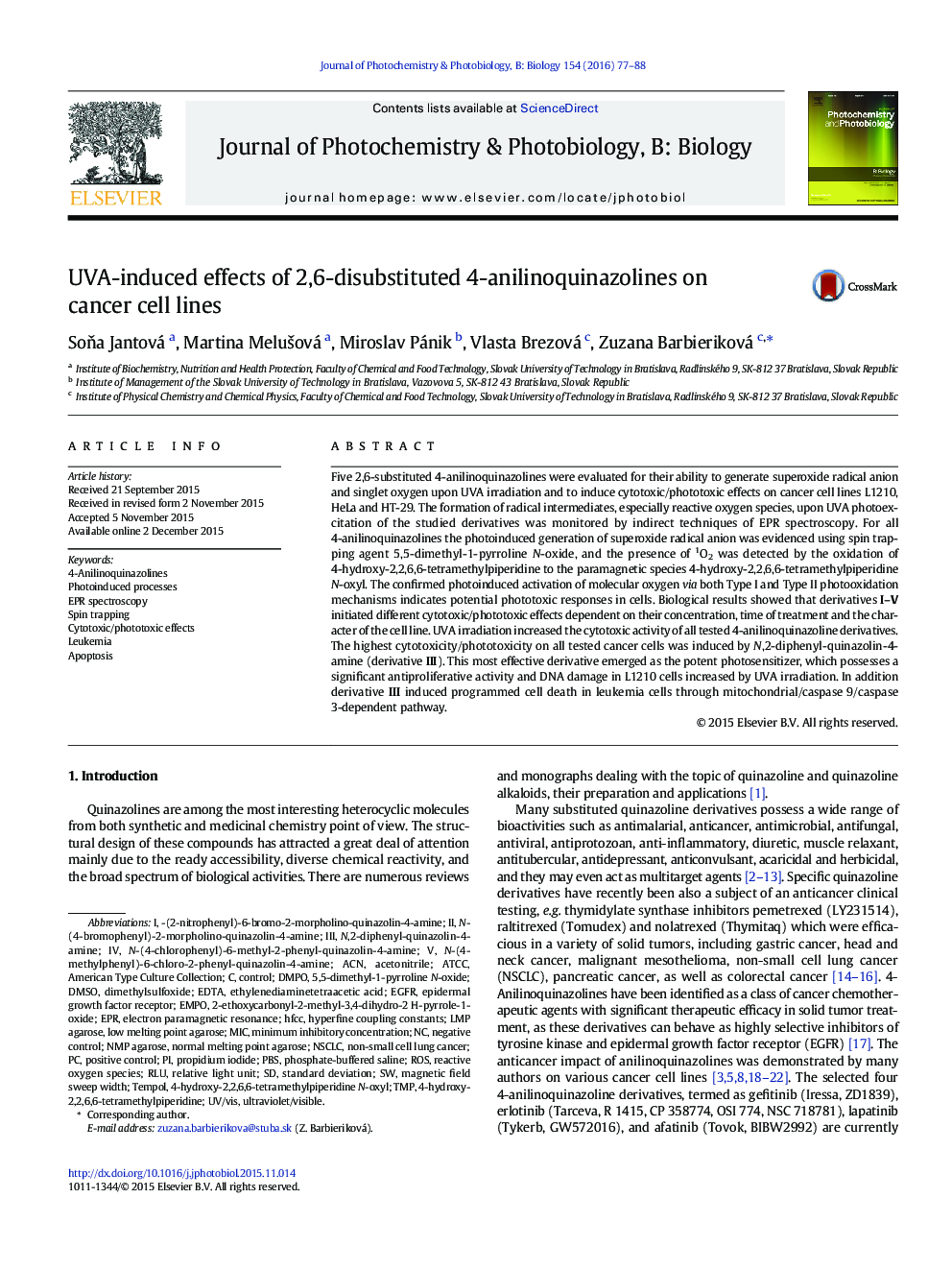| کد مقاله | کد نشریه | سال انتشار | مقاله انگلیسی | نسخه تمام متن |
|---|---|---|---|---|
| 29388 | 44380 | 2016 | 12 صفحه PDF | دانلود رایگان |

• Photoactivation of molecular oxygen in the presence of 4-anilinoquinazolines
• Indirect EPR techniques confirmed photoinduced generation of O2− and 1O2.
• Derivatives decreased the viability of cancer cell lines L1210, HeLa and HT-29.
• UVA irradiation increased cytotoxicity of 4-anilinoquinazolines.
• DNA damage and apoptosis in L1210 cells found for N,2-diphenyl-quinazolin-4-amine
Five 2,6-substituted 4-anilinoquinazolines were evaluated for their ability to generate superoxide radical anion and singlet oxygen upon UVA irradiation and to induce cytotoxic/phototoxic effects on cancer cell lines L1210, HeLa and HT-29. The formation of radical intermediates, especially reactive oxygen species, upon UVA photoexcitation of the studied derivatives was monitored by indirect techniques of EPR spectroscopy. For all 4-anilinoquinazolines the photoinduced generation of superoxide radical anion was evidenced using spin trapping agent 5,5-dimethyl-1-pyrroline N-oxide, and the presence of 1O2 was detected by the oxidation of 4-hydroxy-2,2,6,6-tetramethylpiperidine to the paramagnetic species 4-hydroxy-2,2,6,6-tetramethylpiperidine N-oxyl. The confirmed photoinduced activation of molecular oxygen via both Type I and Type II photooxidation mechanisms indicates potential phototoxic responses in cells. Biological results showed that derivatives I–V initiated different cytotoxic/phototoxic effects dependent on their concentration, time of treatment and the character of the cell line. UVA irradiation increased the cytotoxic activity of all tested 4-anilinoquinazoline derivatives. The highest cytotoxicity/phototoxicity on all tested cancer cells was induced by N,2-diphenyl-quinazolin-4-amine (derivative III). This most effective derivative emerged as the potent photosensitizer, which possesses a significant antiproliferative activity and DNA damage in L1210 cells increased by UVA irradiation. In addition derivative III induced programmed cell death in leukemia cells through mitochondrial/caspase 9/caspase 3-dependent pathway.
Figure optionsDownload as PowerPoint slide
Journal: Journal of Photochemistry and Photobiology B: Biology - Volume 154, January 2016, Pages 77–88